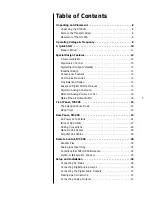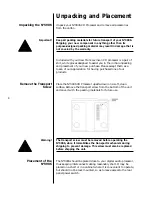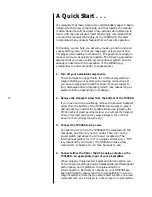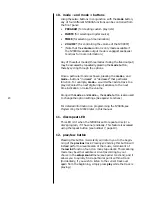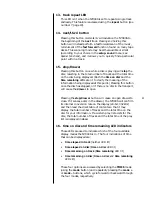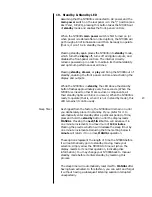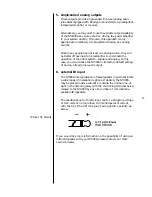
12
Special Design Features
Congratulations on your purchase of the Nº390S CD Processor.
The design team is confident you will enjoy the outstanding
performance of the Nº390S for many years. In case you are
interested in technical details, what follows is a brief outline of
some of the key technologies in your new CD player.
A New Generation
The task of a CD player is easy to define: it must recover the
correct data from the disc and convert that data to a series of
analog voltages with neither amplitude nor timing errors
(sometimes called “jitter”). As simple as this sounds, achieving it
in reality has been extremely difficult—as evidenced by the
significant sonic differences between various CD players.
Conventional CD player design depends heavily on the quality of
the oscillator used to control the rate at which the disc spins. This
oscillator exists in an extremely “noisy” electrical environment
close to the motor that spins the disc. The electrical noise
introduces timing errors in the delivery of the digital signal that
have come to be known as “jitter.” Subsequent handling of the
digital audio signal in traditional CD player designs cannot
improve upon this “jittery” signal, lacking a better reference. To
the contrary, the various stages of signal processing between the
laser pickup and the actual conversion to analog can only
contribute additional jitter of their own.
The Mark Levinson Nº390S leaps beyond conventional digital
audio technology by employing a proprietary, closed-loop jitter-
reduction system in conjunction with a double speed CD-ROM
drive. Using a custom-made crystal oscillator with better than five
part-per-million accuracy, the digital signal is re-clocked immediately
before its conversion to analog, eliminating transport-related jitter
from the digital audio signal. This same crystal oscillator controls
the all-digital servo used to control the rate at which the disc
spins, and the digital to analog conversion process.
In effect, the design of the Nº390S turns the accepted status quo on
its head. By placing the all-important reference clock immediately
prior to digital to analog conversion, and slaving all the mechanical
sub-assemblies to it rather than the other way around, the signal
presented to the outputs of the Nº390S is uncontaminated by
electrically- or mechanically-induced jitter. The sonic advantages
of this design are immediately apparent in the clarity, warmth and
stunning dynamic contrasts exhibited by the Nº390S.
Summary of Contents for 390S
Page 1: ...Owner s Manual Nº390S CD Processor ...
Page 61: ...61 Dimensions ...
Page 62: ...62 Installation Notes ...
Page 63: ...63 ...





